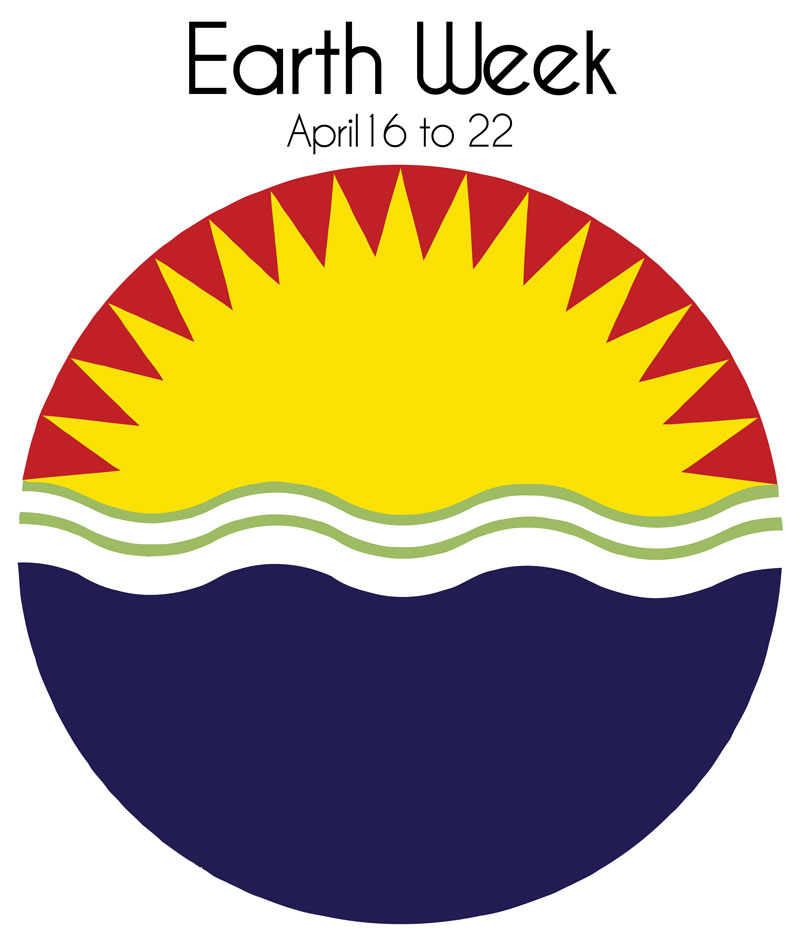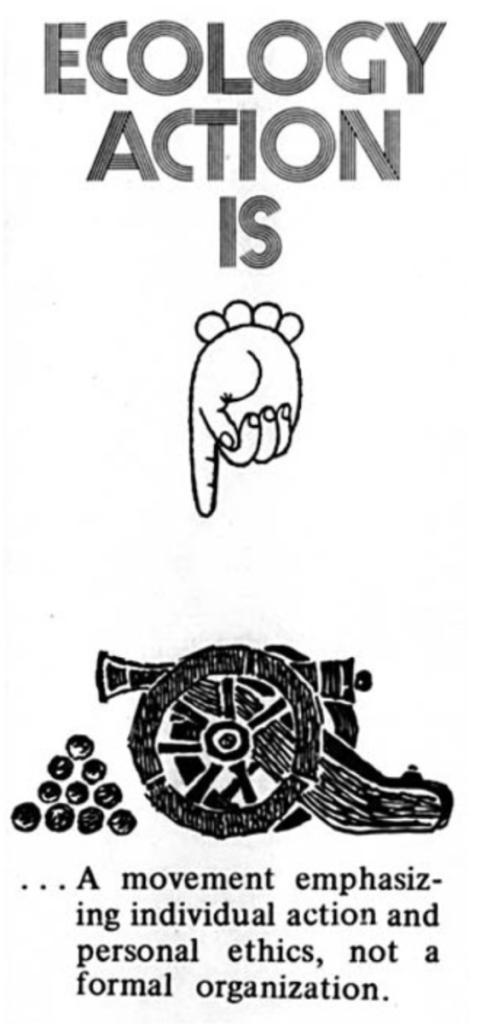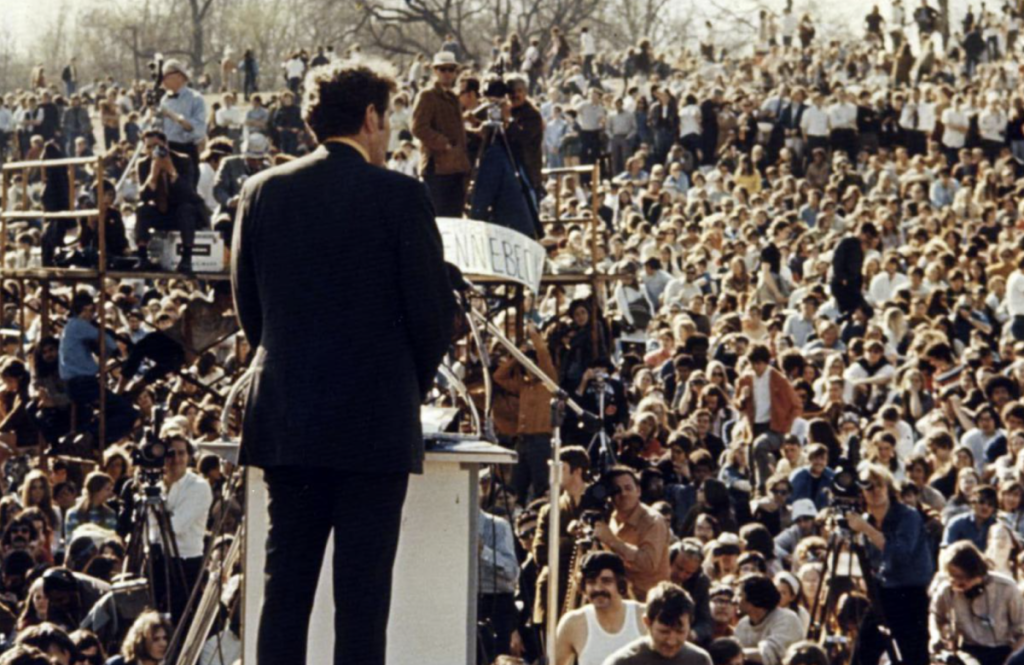
Earth Week began in Philadelphia in 1970 as a result of a makeshift committee of students, professionals, leaders of grassroots organizations and businessmen concerned about the environment who decided a sole day for the Earth was not sufficient. It was Democratic Senator Gaylord Nelson of Wisconsin, however, who garnered their attention through his call to action in the form of a national “environmental teach-in” and a group of University of Pennsylvania Landscape Architecture and Regional Planning students who originally heeded the call. They called themselves the Earth Week Committee of Philadelphia – straight and to the point – and they soon grew to include a plethora of other students from the surrounding area.
By 1970, many had begun to refer to Philadelphia as “Filthy”delphia, and while the air and water pollution was dire, it was not necessarily unique. One could find this level of pollution in any major American city at the time. The main goal of the committee was to find out who was doing the polluting and how they were doing it. Eventually the city released to them information that was previously confidential. Among the major pollutants were power plants, oil refineries, city incinerators, chemical plants, coke ovens, smelting operations and automobiles, releasing sulfur dioxide and carbon monoxide, among other toxic gases.
Approximately 30,000 people gathered in Philadelphia’s Fairmount park to sign the “Declaration of INTERdependence,” listen to the Broadway cast of Hair sing “Air” (“Hello, carbon monoxide”) and hear from speakers like U.S. Sen. Edmund Muskie (author of the landmark U.S. Clean Air Act of 1970), and poet Allen Ginsberg. The committee planned environmental events from educational activities to scientific conferences, but it was the mass media coverage at the national level that gave rise to the Earth Week we know today.
“Earth Day worked because of the spontaneous response at the grassroots level. We had neither the time nor resources to organize 20 million demonstrators and the thousands of schools and local communities that participated. That was the remarkable thing about Earth Day. It organized itself.”
– Gaylord Nelson, Founder, Earth Day
Young people took the lead, as usual, but clerics and politicians soon recognized the value of the movement for their own gain. The former endeavored to “reconcile the conflict between the biblical themes of ‘multiplying and subduing the earth’ and man’s stewardship of the land,” while the latter hopped onto an all-encompassing movement because it contained potential votes of previously apolitical and/or skeptical individuals – including labor and peace activists and the black community – in the hope of attaining them.

While some black members of the community heeded the call to action, leaders in the black community felt that participating in the movement would only take attention away from their own activism. They responded to the committee’s request by saying, “by joining you we fragment our own power base.” This has continued to be an issue surrounding the environmental movement as a whole over time. More recently, however, the Sunrise Movement has been able to reframe the narrative from protecting the planet to protecting people, something Naomi Klein also emphasizes in her work. Klein’s powerful statement, “You can’t have climate change without sacrifice zones, and you can’t have sacrifice zones without disposable people, and you can’t have disposable people without racism” addresses how the impacts of climate change are disproportionate.
In addition, the original Climate Plan, on which President Biden campaigned, called for “communities who have borne the toxic brunt of dirty industries, so many of them Indigenous, black, and brown, not only to benefit from the transitions but to help design them at the local level” and last year he released a “Proclamation on Earth Day, 2021”, emphasizing his administration goals with regard to climate justice and combating climate change. This is a step in the right direction, but it does not seem to have come to fruition just yet. Racial justice goes hand and hand with Environmental Justice and this lack of realization at the time of the original Earth Week organization was detrimental.
Regardless of the participation or lack thereof of these groups, the plans that had been developed were extremely ambitious and required much more money than the group – “with no track record, no recognizable constituency, [and] no 501(c)(3) tax status” – could realistically raise, without help. Not only was the lack of funding an operational dilemma, but it was also largely a personal one, as Edward W. Furia, the Project Director was hired with a salary equal to what he would have received as Assistant DA, stipulated on raising the equivalent to it in addition to operational funds.
“Thirty per cent of the Earth Week Committee’s $30,000 budget came from business… and there was… delight that this money was being used to publicize how these same businesses caused pollution.”
– David Culhane, CBS News correspondent
CBS Special Report on Earth Day with Walter Cronkite
So, he chased after and roped in over 60 corporate sponsors, including Philadelphia Gas Works, which relied on advertising natural gas as a cleaner alternative to coal and oil and would benefit from Earth Week’s admonition of these two energy sources. Some of the sponsors were crucial in the dissemination of information. For example, programs were printed on Scott Paper and phone services were sponsored by Bell Telephone. Each sponsor received merely a line in the official Earth Day program. But it was the acquiescence of the Philadelphia Chamber of Commerce that put the funding over the edge.
Originally, the Chamber had planned on using $50,000 raised by its members to put a large full-color ad in the Philadelphia Inquirer “defend[ing] [the business community’s] environmental record … and indirectly impugn[ing] the motives of the Earth Week Committee.” The Earth Week committee was made aware of this by virtue of an anonymous caller and in response, Furia and Austan Librach, a graduate student at the University of Pennsylvania and Chairman of the Earth Week Committee at the time, intercepted the Chamber’s “Business Response to Earth Day” meeting. Together, they convinced the Chamber that it was in their best interest to redirect the money allocated for the production of the ad towards Earth Day and Earth Week in exchange for publicizing their financial support. Despite the fact that the two men were unwavering in their decision to publish data on pollutants Chamber companies emitted, the Chamber announced a $30,000 payment, which ended up being approximately ⅓ of Earth Week’s total funding.
The money did not come without consequences, however, as a controversy developed with regard to the ethics of accepting money from businesses that did the polluting that Earth Week was protesting. Regardless, many young people participated, wearing gas masks and passing out surgical ones to signify the danger of air pollution. In the end, Earth Week was deemed a resounding success. “Altogether some 20 million people – 10% of the U.S. population – participated in 1970 Earth Day teach-ins, marches, and rallies. About half were students, at nearly 2,000 colleges and 10,000 elementary and high schools.”

Listen to music played during Earth Week here!
Sources:
https://www.epa.gov/history/epa-history-earth-day
https://www.sciencehistory.org/distillations/philadelphia-earth-week-fifty-years-on